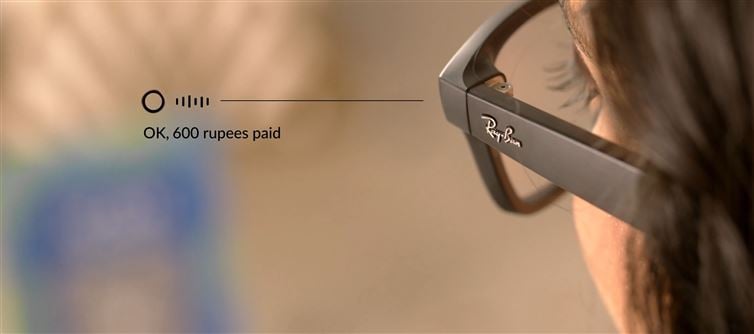
Imagine walking into a shop, looking at your bill, and watching it disappear from your account—all without touching a phone, scanning a QR code manually, or entering a PIN. It sounds like science fiction, but in india, it’s happening now. Meta’s Ray-Ban smart glasses, powered by AR and integrated with whatsapp UPI, are turning heads—and wallets. Users simply stare at a QR code, issue a voice command, and the payment is done. Shopkeepers are stunned, netizens are amazed, and the future of cashless transactions has arrived—with style.
1. The technology Behind the Magic
Meta Ray-Ban AR glasses are not just eyewear—they are a wallet PLATFORM' target='_blank' title='digital-Latest Updates, Photos, Videos are a click away, CLICK NOW'>digital portal. Equipped with cameras, microphones, and real-time processing, these glasses can recognize objects, text, and QR codes instantly. Using Meta AI, the glasses process visual input, execute commands, and communicate with linked applications like WhatsApp. When a user says, “Hey Meta, scan and pay 600 rupees,” the AI recognizes the QR code, extracts the merchant’s UPI ID, and executes the transaction seamlessly. No phones. No cards. No PINs (for small UPI Lite transactions). Just look and pay.
2. How UPI Lite Makes Instant Payments Effortless
UPI Lite, introduced by the National Payments Corporation of india (NPCI), is the secret sauce behind this futuristic convenience. Designed for small, frequent transactions, UPI Lite allows payments without PIN verification up to a certain limit. This feature is perfect for hands-free, AR-driven payments. The glasses handle all the heavy lifting: reading the QR code, processing the payment, and confirming the transaction—making “just staring” at a bill a reality.
3. A New Era of Convenience—or a Privacy Nightmare?
Hands-free payments are undeniably convenient. Carrying grocery bags, shopping with kids, or walking through a crowded market no longer requires fumbling with phones or cash. But with convenience comes risk. Using AR glasses to process transactions raises security and privacy questions. Could someone hack the system, trigger accidental payments, or access your financial info? Current iterations mitigate these risks via voice recognition and deliberate command confirmation, but as adoption grows, these concerns will need serious attention.
4. The Shopkeeper Shock Factor
One of the most viral aspects of the video is the reaction of shopkeepers. In markets across india, vendors are used to UPI scans requiring phones, confirmations, and sometimes small errors. Suddenly, a customer stares at a QR code, and the payment is processed automatically. The reactions range from disbelief to awe, creating the perfect storm for social media virality. This spectacle isn’t just tech—it’s theatre, and it’s changing perceptions of digital payments overnight.
5. Real-World Feasibility and Challenges
While the technology works, real-world adoption faces hurdles:
• Multiple QR Codes: Shops often display several QR codes, requiring the system to select the correct one accurately.
• Accidental Payments: The AI requires deliberate voice commands to prevent unintentional transfers.
• Cost and Accessibility: High-end AR glasses remain expensive, limiting adoption to early tech enthusiasts or urban elites.
Despite these barriers, the trajectory is clear: AR-driven, hands-free payments are the future—and India’s UPI ecosystem is uniquely positioned to lead the charge.
Conclusion: Welcome to the Stare-and-Pay Era
The Meta Ray-Ban AR glasses aren’t just futuristic eyewear—they are a glimpse of a world where cash, wallets, and even phones are optional. Staring at a QR code to pay may seem surreal today, but for tech enthusiasts in india, it’s already a reality. The implications are massive: for convenience, for privacy, and for the way billions transact daily. One thing is certain—the next time you see someone “just looking” at a bill, don’t be surprised if it vanishes from their bank account in seconds.




 click and follow Indiaherald WhatsApp channel
click and follow Indiaherald WhatsApp channel